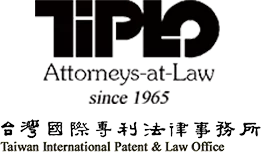Amendment to Trademark Act Proposed with GI Marks Protection Strengthened.
E090704Y2・E090701Y2 Aug. 2009(E117)
TIPO has proposed to amend the Trademark Act to relax the qualification requirements of a collective mark applicant with a view to stopping foreign applicants (especially PRC-national applicants) from outflanking the registration of the geographical indication of local agricultural products.
The TIPO-proposed amendment which has a total of 105 articles will add 12 articles to, remove 7 articles from, and revise 75 articles of the current Trademark Act. TIPO already held four public hearings on the proposed amendment with another scheduled for 7 and 9 July respectively to hear opinions from all sides.
According to TIPO, insufficient protection of geographical indication (GI) of the origin of local agricultural products under the current Trademark Act has led to outflanked Chinese registrations of the GI of various local agricultural products, for example, A Li Shan which is the GI of origin of, among many others, tea products. TIPO said international GI protection is premised on national GI protection. (Paragraph 3 of Article 67 of the proposed amendment) Under the current Trademark Act, an eligible applicant seeking registration of a certification (or GI) mark must be a person who distributes for business the agricultural product produced at that particular origin. Take the Chi-Shang Rice mark for example (Chinese: 池上米): only rice distributors may apply for registration of the mark. Under the proposed amendment, the association formed by the relevant businesses, such as the farmers association may apply for certification mark (GI) registration.
TIPO also proposed to add an Article 73 on collective marks for agricultural products. According to this new provision proposed, a collective mark used on a product or service is a mark which identifies the provider of the product or service as a member of an association, organization or group and which distinguishes the product or service from those provided by non-members.
The relevant provisions proposed are as follows:
| Article 65 A certification mark is a mark which is used by the mark holder to certify the specific quality, precision, materials, method of production or other properties of the product or service of another person and which distinguishes the product or service certified from those uncertified. |
Article 67 The applicant seeking the registration of a certification mark shall present with the application the document proving his/her ability to certify the product or service of others, the specification of use of the proposed mark and a signed statement to the effect that he/she will refrain from producing or distributing the product or providing the service certified by the proposed mark. Where there is doubt over the representation of the applicant seeking the registration of a geographical origin certification mark, the Trademark Authority may consult with the central competent authority of the product or service on which the proposed mark will be used. Where the applicant seeking the registration of a geographical origin certification mark is a foreign juristic person, group or government agency, the applicant shall present the document proving the legal national protection of the proposed mark in its home country. The specification of use of the proposed certification mark shall indicate these particulars: 1. Content of the certification proposed. 2. Conditions for compliance for using the mark. 3. Method of administering and supervising the use of the proposed mark. 4. Penalty. The Trademark Authority shall publish the specification of use of the proposed mark together with the approval of the proposed mark. Any change made to the certification mark after the mark is registered must be approved and published by the Trademark Authority. |
Article 68 The use of a certification mark means the use of the mark by another person under the approval of the mark holder on the relevant articles or documents to certify that the product or service provided by such person conforms to the standards provided in the specification of use of the mark. |
Article 73 A collective mark means a mark which the consumer identifies to recognize the product or service using the mark is one provided by the member of an association, organization or group and which distinguishes the product or service using it from those provided by non-members. Where the specific quality, reputation or other properties of a product are mainly attributable to the geographical origin of such product, the geographical indication of the origin or any mark which sufficiently identifies the origin may, on application, be registered as a geographical indication collective mark. |
Article 74 The collective mark application shall indicate the class and the designation of the goods or service and be filed with the Trademark Authority with the specification of use of the proposed mark. The specification of use of the proposed collective mark provided in the preceding paragraph shall indicate 1. Qualification requirements of a member. 2. Conditions for compliance for using the mark 3. Method of administering and supervising the use of the proposed mark. 4. Penalty. The collective mark holder shall accept a producer/provider of the product/service as its member if such producer/provider meets the standards provided in the specification of use of the mark. |
Article 75 The use of a collective mark means the use of the mark by the member of the group to designate the product or service he/she provides is one provided by the member of the group. |
(2009.07)
/EMA














